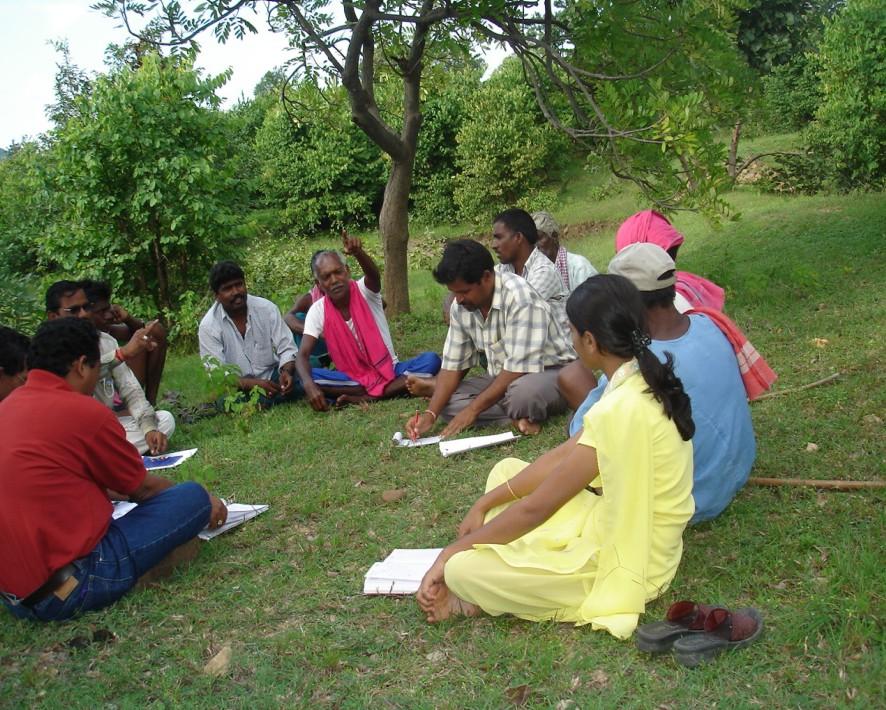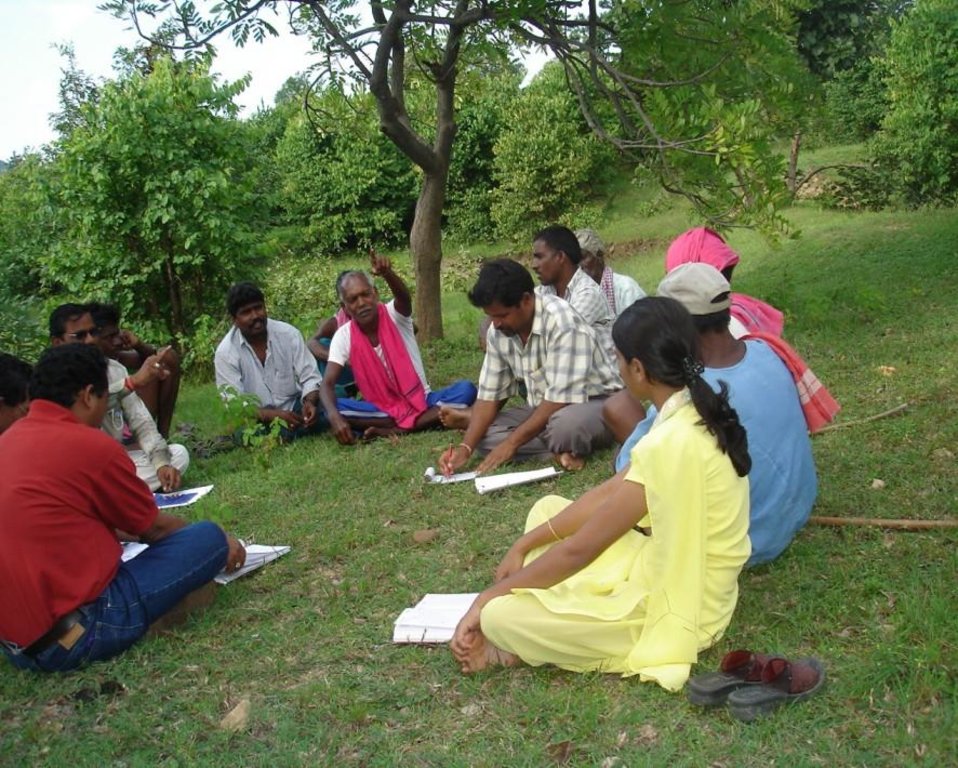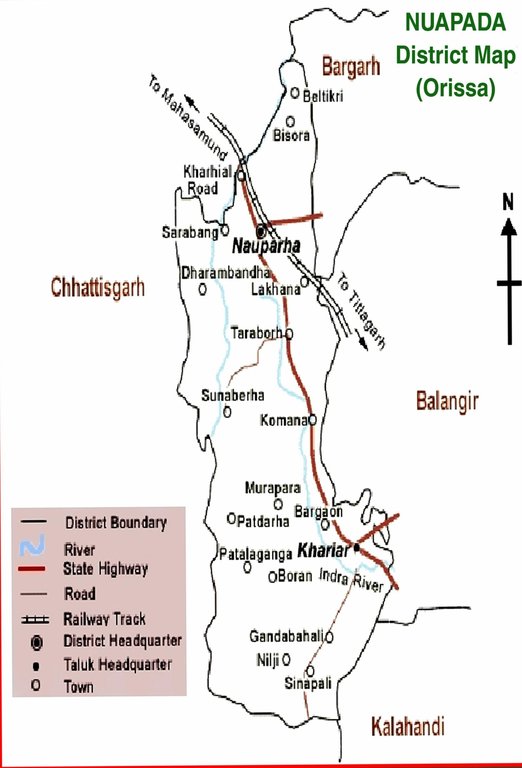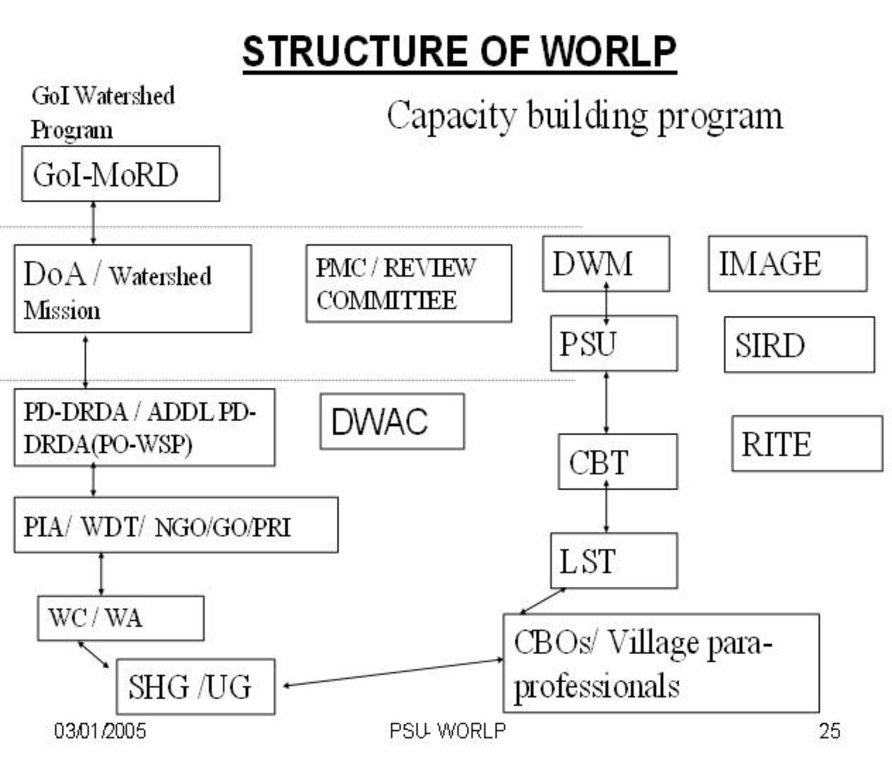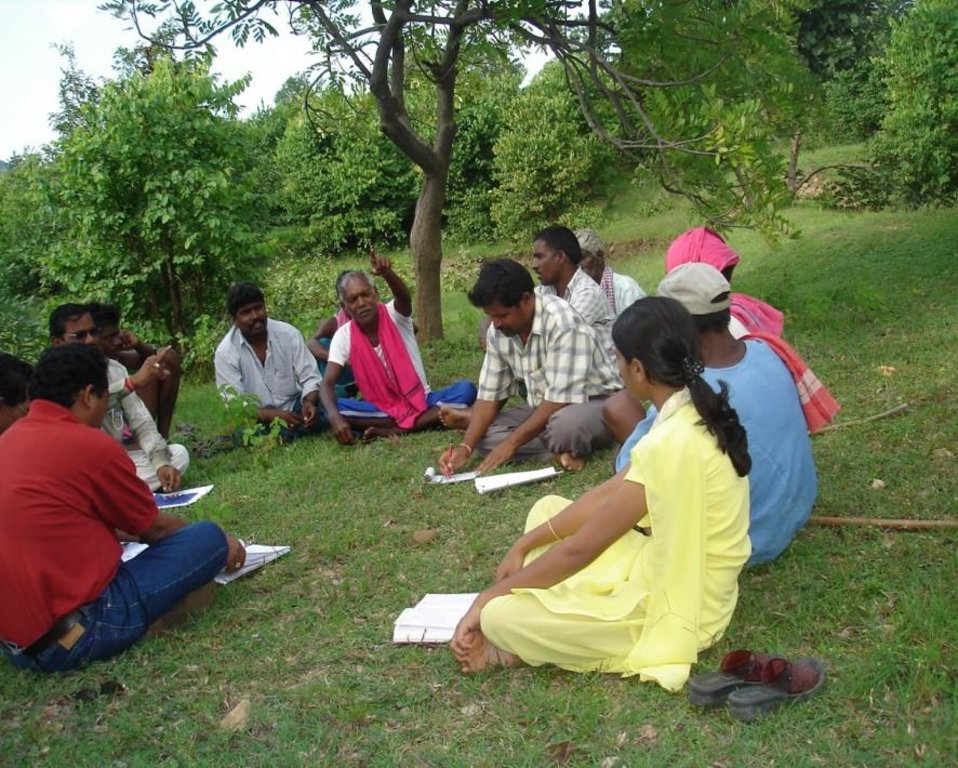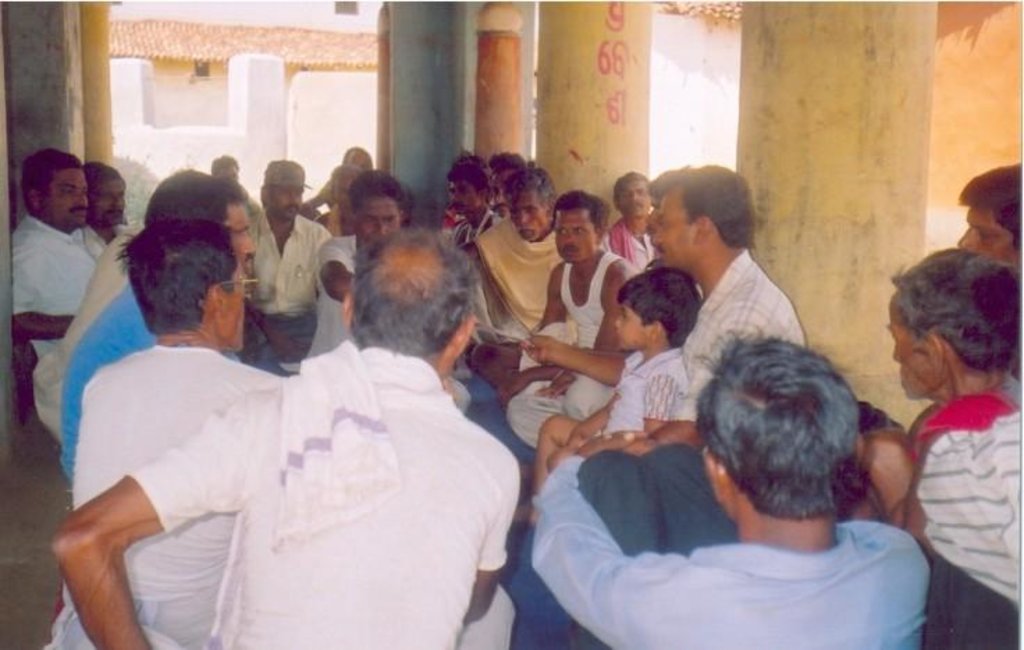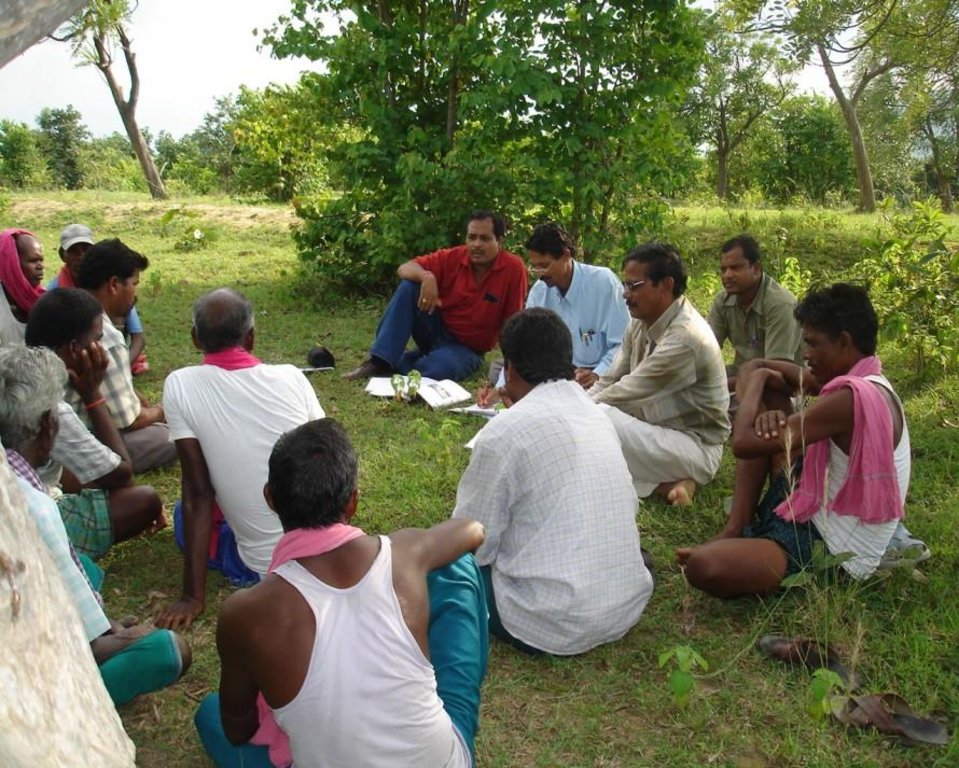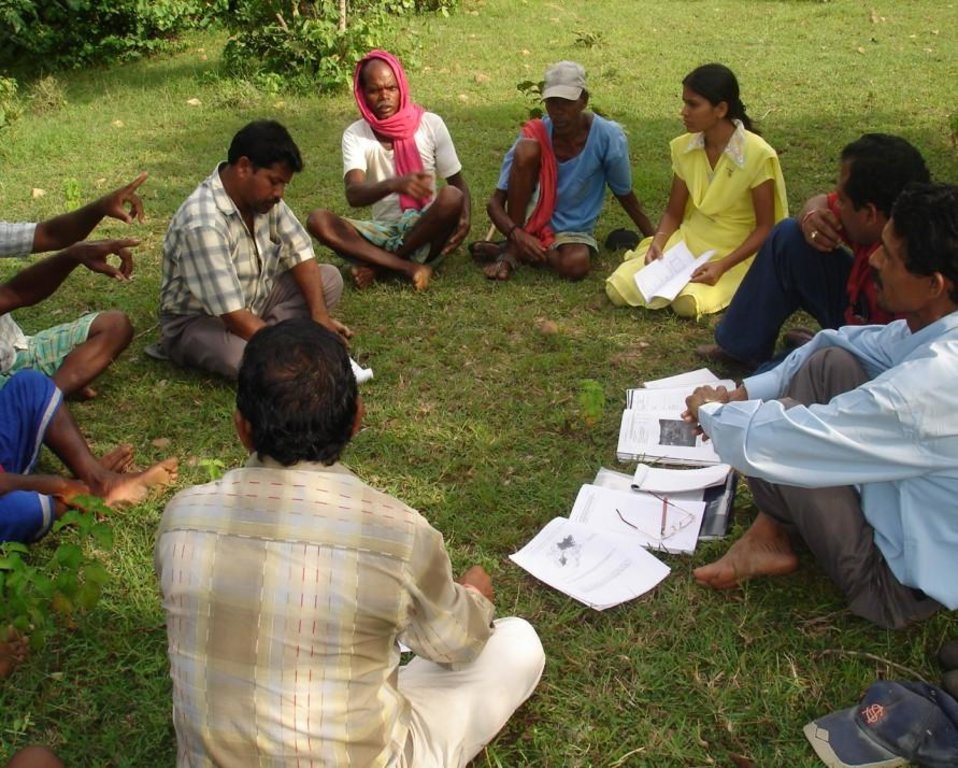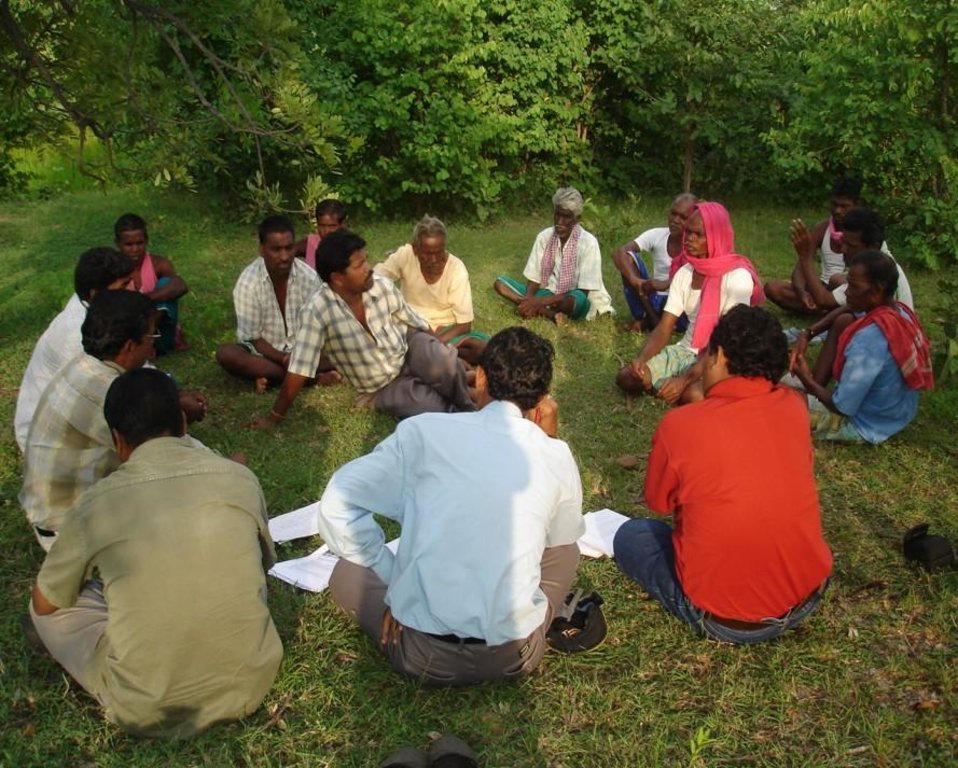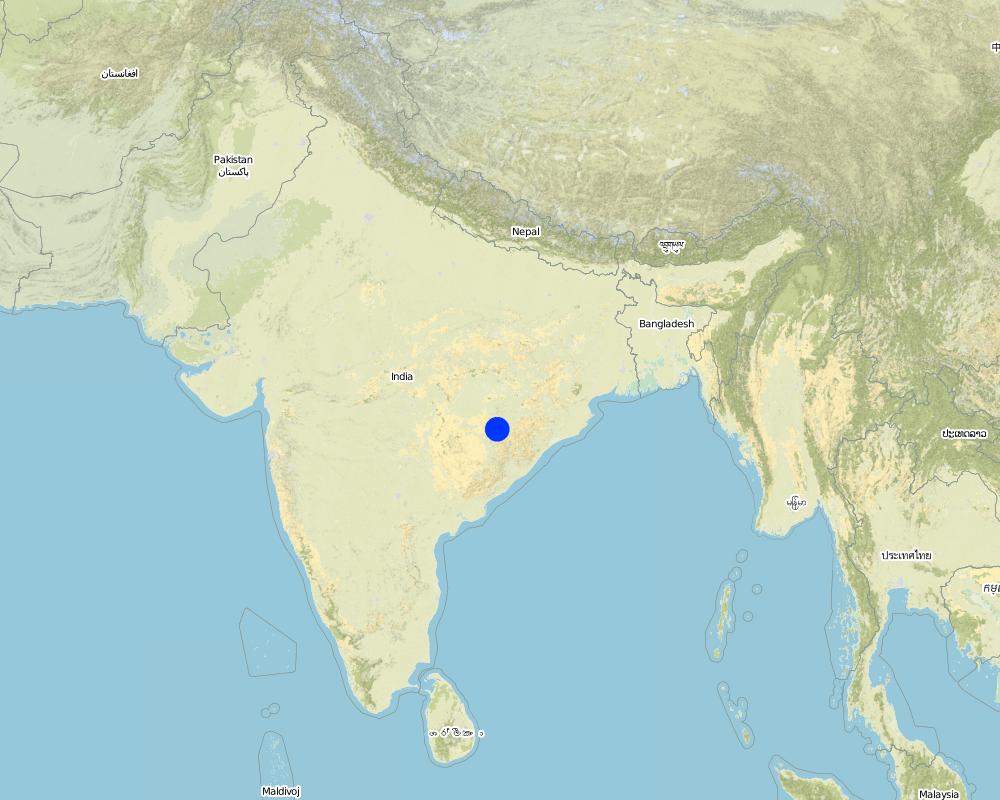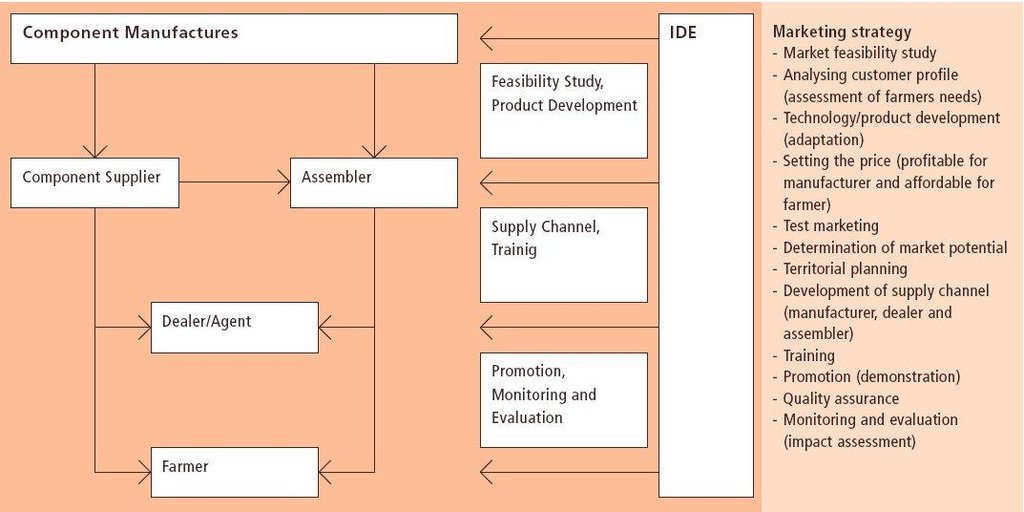Participatory Watershed Development Approach [Индия]
- Создание:
- Обновить:
- Составитель: Narendra Kumar Panigrahi
- Редактор: –
- Рецензент: Fabian Ottiger
approaches_2368 - Индия
Просмотреть разделы
Развернуть все Свернуть все1. Общая информация
1.2 Контактные данные специалистов и организаций, участвующих в описании и оценке Подхода
Название организации (-ий), содействовавших документированию/оценке Подхода (если применимо)
Orissa Watershed Developemnt Mission - Индия1.3 Условия, регламентирующие использование собранных ВОКАТ данных
Составитель и ответственный/-ые специалист(-ы) согласны с условиями, регламентирующими использование собранных ВОКАТ данных:
Да
1.4 Ссылка (-и) на Анкету (-ы) по Технологиям УЗП
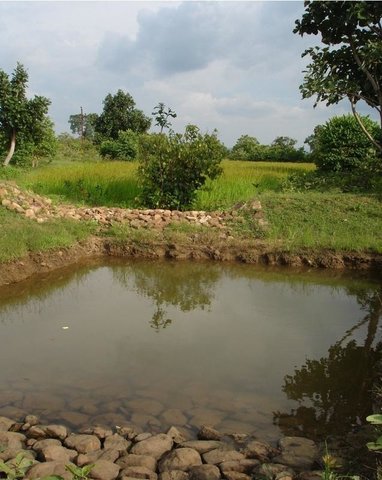
Sunken gully pits [Индия]
Runoff management pit in the gully with provision of waterway for excess runoff water.
- Составитель: SATYANARAYANA SAHU
2. Описание Подхода УЗП
2.1 Краткое описание Подхода
Livelihood asset base development through participatory watershed developemnt keeping people at the center stage of development and promoting village level institutions.
2.2 Подробное описание Подхода
Подробное описание Подхода:
Aims / objectives: Livelihoods improvement through asset building; Capacity building, Enabling environment, Village level institutions building, Natural resource management. Participatory tools are used to do situational analysis and planning. Self Help Groups and User Groups are promoted for taking up micro enterprise and land based activities respectively. Community mobilisation is done using local folk songs and dance.
Stages of implementation: The project is implemented within a five year period. First year is used as rapport building, institution building and preparation of micro plan. The external team plays the role of facilitators and capacity building of the primary stakeholders.
2.3 Фотографии, иллюстрирующие Подход
2.5 Страна/ регион/ место, где применялся Подход
Страна:
Индия
Административная единица (Район/Область):
Village- Larki, Block- Komna, Dist.- Nuapada.
Map
×2.6 Даты начала и окончания реализации Подхода
Год начала реализации:
2001
Год окончания (Если Подход больше не применяется):
2010
2.7 Тип Подхода
- в рамках проекта/ программы
2.8 Каковы цели/ задачи Подхода
The Approach focused mainly on SLM with other activities (Productivity enhancement; Income generating programme, Water and sanitation)
1. Livelihood improvement. 2. Poverty Reduction. 3. Increase households(HH) annual income. 4. Eco restoration
The SLM Approach addressed the following problems: Natural calamity ( drought) 2. Poverty 3. Illiteracy 4. Sustanability in agriculture production.5. Economic enhancement of the people.
2.9 Условия содействующие применению Технологии/ Технологий в рамках Подхода или затрудняющие его
Социальные/ культурные/ религиозные нормы и ценности
- затрудняют
Education, personal conflict, lack of knowledge, skill
Treatment through the SLM Approach: IEC material, Training,Hand holding support.
Наличие/ доступность финансовых ресурсов и услуг
- затрудняют
Poor financial status of theof community.
Treatment through the SLM Approach: Financial Assistance from the project with little contributioin from the beneficiaries
Институциональные условия
- затрудняют
Ugs not functional as desired
Treatment through the SLM Approach: strengthening of the Ugs
Нормативно-правовая база (землевладение, права на земле- и водопользование)
- затрудняют
No usufruct right/ownership on CPR land
Treatment through the SLM Approach: Users right/ usufrut right to the UG
The existing land ownership, land use rights / water rights hindered a little the approach implementation Fragmentated land ownership with low land holding dinder the implementation of the approach.
Осведомленность в области УЗП, доступность технической поддержки
- затрудняют
Unable to perceive real problem because of technical failures
Treatment through the SLM Approach: Technical problem analysis with the community
3. Участие и распределение ролей заинтересованных сторон
3.1 Заинтересованные стороны, участвующие в реализации Подхода и их роли
- эксперты по УЗП/ сельскому хозяйству
Working land users were mainly men (Most men are engaged in landbased activities.) Women are not capacitated to putforth their views in community meeting. Women are not free enough to say something due to socio-cultural hindrance. Women are not empowered to participate along with the men in public meeting. As per the guideline Land Less(LL) and Very Poor (VP) are included in Watershed Development Committee(WDC) for decision making.
- общественные организации
- государственные власти (отвечающие за планирование или принятие решений)
Govt. agency
- международные организации
3.2 Участие местных землепользователей/ местных сообществ на разных стадиях реализации Подхода
| Участие местных землепользователей/ местных сообществ | Перечислите участников и опишите их вовлеченность | |
|---|---|---|
| инициирование/ мотивация | пассивное | public meetings; Lack of awareness about the SWC measures. |
| планирование | интерактивное | Mainly: rapid/participatory rural appraisal; partly: interviews/questionnaires; Conceptual clarity regarding SWC & its benefits |
| выполнение | внешняя поддержка | Mainly: casual labour; partly: responsibility for minor steps; Engaged as daily wage labourer. Extends cooperation in non-monetary activities |
| мониторинг/ оценка | интерактивное | Mainly: public meetings; partly: interviews/questionnaires; 1. Evaluation of field work through measurement. 2. Transperancy on expenditure and programme. |
| Research | пассивное |
3.3 Схема реализации (если имеется)
3.4 Принятие решений по выбору Технологии/ Технологий УЗП
Укажите, кто принимал решение по выбору применяемой Технологии/ Технологий:
- в основном землепользователи при поддержке специалистов по УЗП
Поясните:
The problems are discussed while doing transect in the watersheds. Solutions aby the users as well as the SWC specialists are discussed. The consensus is arrived on the technology which land users can accept, adopt and maintain.And the technology do not put pressure on the natural environment.
Decisions on the method of implementing the SLM Technology were made by mainly by land users supported by SLM specialists. During the MLP,transect is carried along with the land users and options were discussed with the land users. Then they choose the best option after analysing the opportunities and constraints.The UG implement the technology. This has been laid down in t
4. Техническая поддержка, повышение компетенций и управление знаниями
4.1 Повышение компетенций/ обучение
Проводилось ли обучение землепользователей/ других заинтересованных лиц?
Да
Укажите, кто проходил обучение:
- землепользователи
- SWC specialists, teachers (2), extensionists/trainers (1), planners (3)
Тип обучения:
- в ходе работы
- обмен опытом между фермерами
- опытные участки
Рассматриваемые темы:
Class room as well as on farm training provided to land users.
4.2 Консультационные услуги
Есть ли у землепользователей возможность получать консультации?
Да
Укажите, где именно оказываются консультационные услуги:
- в постоянно функционирующих центрах
Описание/ комментарий:
Name of method used for advisory service: Participatoy extension methods and exposure to successful fields, demo plotsl; Key elements: Seeing is beleiving and learning by doing; 1) Mainly: Through change agents(Community Link Workers), Partly: government's existing extension system 2) Mainly: Through change agents(Community Link Workers), Partly: government's existing extension system; Extension staff: specifically hired project employees 3) Target groups for extension: land users; Activities: To expertise and replicate
Advisory service is inadequate to ensure the continuation of land conservation activities; Extensioin programme relating to production aspects of the technology is not adequate.
4.3 Институциональная (организационная) поддержка
В ходе реализации Подхода были ли организованы новые институциональные структуры или поддержаны уже существующие?
- да, умеренно
Укажите уровень, на котором структуры были укреплены или вновь созданы:
- местные
Укажите тип поддержки:
- финансовая
- повышение компетенций/ обучение
- оборудование
4.4 Мониторинг и оценка
Являются ли мониторинг и оценка частью Подхода?
Да
Комментарии:
bio-physical aspects were regular monitored through observations
technical aspects were regular monitored through measurements
socio-cultural aspects were regular monitored through observations
economic / production aspects were regular monitored through measurements
area treated aspects were regular monitored through observations
no. of land users involved aspects were regular monitored through measurements
management of Approach aspects were regular monitored through observations
There were few changes in the Approach as a result of monitoring and evaluation: Increased participation and ownership. User groups are strengthened. Viewsa of the Users respected and involved in decision making.
4.5 Научные исследования
Были ли научные исследования частью Подхода?
Да
- Participatory and action research
Напишите подробнее и назовите тех, кто выполнял исследования:
Participatory technology development through IDEI and action research with independent consultancy firms have been initiated. But relating to approach research study have not been initiated. This is infant stage.
Research was carried out on-farm
5. Финансирование и внешняя материальная поддержка
5.1 Годовой бюджет мероприятий по УЗП в рамках Подхода
Если точный годовой бюжет неизвестен, укажите примерный диапазон затрат:
- 10000-100000
Комментарий (например, основные источники финансирования/ ключевые доноры):
Approach costs were met by the following donors: government (national - MoRD): 100.0%
5.2 Финансирование и внешняя материальная поддержка, предоставляемая землепользователям
Предоставлялась ли землепользователям финансовая/ материальная поддержка для применения Технологии /Технологий?
Да
5.3 Субсидии на отдельные затраты (включая оплату труда)
- оборудование
| Укажите, какие ресурсы были субсидированы | В какой степени | Опишите субсидии подробнее |
|---|---|---|
| инвентарь/ инструменты | профинансированы частично | |
- сельскохозяйственные
| Укажите, какие ресурсы были субсидированы | В какой степени | Опишите субсидии подробнее |
|---|---|---|
| Biocides | профинансированы частично | |
- инфраструктура
| Укажите, какие ресурсы были субсидированы | В какой степени | Опишите субсидии подробнее |
|---|---|---|
| community infrastructure | профинансированы частично | |
Комментарии:
UG
5.4 Кредитование
Предоставлялись ли в рамках Подхода кредиты на мероприятия УЗП?
Нет
6. Анализ влияния и заключительные положения
6.1 Влияние Подхода
Сумел ли Подход помочь землепользователям внедрить и поддерживать технологии УЗП?
- Нет
- Да, немного
- Да, умеренно
- Да, существенно
The SWC measures are maintained by the land users. The utilisation of water resource through adoption of cropping systems. Multiple cropping adopted in stead of mono cropping.
Сумел ли Подход разрешить правовые проблемы землевладения/ землепользования, препятствующие использованию технологий УЗП?
- Нет
- Да, немного
- Да, умеренно
- Да, существенно
Community mobilisation & participatory planning reduces the problem to some extent.Group activities are initiated to strengthen community. The problem is likely to be overcome in the near future.
Did other land users / projects adopt the Approach?
- Нет
- Да, немного
- Да, умеренно
- Да, существенно
Other watershed project have replicated the best pracitces adopted in this approach.
6.3 Долгосрочная устойчивость мероприятий в рамках Подхода
Могут ли землепользователи самостоятельно (без внешней поддержки) продолжать применение того, что было реализовано в рамках Подхода?
- да
6.4 Сильные стороны/ преимущества Подхода
| Сильные стороны/ преимущества/ возможности по мнению землепользователей |
|---|
| Views and opinion of the beneficiaries are considered (How to sustain/ enhance this strength: Regular follow- up.) |
| Сильные стороны/ преимущества/ возможности по мнению составителя или других ключевых специалистов |
|---|
| 1.Community Organisation (How to sustain/ enhance this strength: Strengthen village level institutions) |
| 2. Participatory Approaches (How to sustain/ enhance this strength: Institutionalise processes) |
| 3. Monitoring (How to sustain/ enhance this strength: Strengthen community monitoring) |
| 4. Evaluation (How to sustain/ enhance this strength: Evaluation by both internal and external agency) |
| 5. Ownership (How to sustain/ enhance this strength: User rights ensured, Community Fund Sustainably utilised) |
6.5 Слабые стороны/ недостатки Подхода и пути их преодоления
| Слабые стороны/ недостатки/ риски по мнению землепользователей | Возможные пути их преодоления/снижения? |
|---|---|
| Coherence among group members | How to make the groups self sustainable? This needs to be addressed by providing financial freedom, decision making opportunities,vision building through exposure to better groups |
| Слабые стороны/ недостатки/ риски по мнению составителя или ответственных специалистов | Возможные пути их преодоления/снижения? |
|---|---|
| Facilitators attitude | Capacity building programme for the facilitators |
7. Справочные материалы и ссылки
7.1 Методы сбора/источники информации
- выезды на места, полевые обследования
- опросы землепользователей
Ссылки и модули
Развернуть все Свернуть всеСсылки

Sunken gully pits [Индия]
Runoff management pit in the gully with provision of waterway for excess runoff water.
- Составитель: SATYANARAYANA SAHU
Модули
Нет модулей


